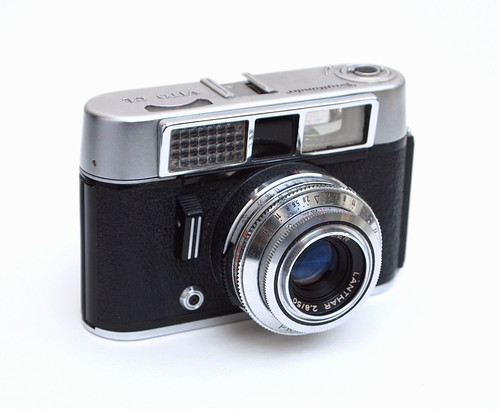 |
Voigtländer Vito CL Deluxe
|
Voigtländer used the name
Vito for many 35mm cameras throughout its history as a manufacturer, with derivative names of Vitoret, Vitomatic, Vitessa and Vitrona denoting parallel or specialised developments alongside the broader and longer lived Vito line. One of the three cameras that I found in Stockholm's
flea markets was the
Voigtländer Vito CL, bought with a Kodak Instamatic 300 for 100 SEK. Although I wasn't really looking out for another 35mm viewfinder camera, the price bundled with the Instamatic and its part used film cartridge was enough of a draw. Despite being rather grubby, a cursory inspection showed that the meter needle responded to light, and the shutter fired at a number of speeds (unlike earlier Vito cameras, the Vito CL doesn't require a film inside to operate the film advance and release the shutter), and it appeared to be in working order.
The first Vito models were 35mm folding cameras, but by the mid-1950s, rigid-bodied versions were produced, initially at the same time as the last folding version - the
Voigtlander Vito IIa. The first rigid-bodied Vito was designated the
Vito B, and as production continued with the C series into the early 1960s, aspects of the Vito design became similar to many other manufacturers' rigid body cameras. The main changes from the B to the C series were the placing of the shutter release on the front rather than the top of the camera, a gently tapering top plate section, the removal of strap lugs and moving the PC socket for flash on the body. The Vito C cameras inherited a very similar rounded-end body style, large viewfinder and pop-up rewind knob. A further difference from the all-metal Vito B series was the use of a small amount of plastic in the construction - around the viewfinder and light meter windows and as finger grips on the aperture ring.
The C series had a large number of variants, the main differences being denoted by additional letters in the name: the 'L' in the name Vito CL stands for coupled (selenium) light meter. Other models had
D for an uncoupled light meter,
R for rangefinder and
S in the last Vito models for coupled CDS light meters. These naming conventions were also compounded for the Vito CLR and CSR models. Additionally there were 'standard' and 'deluxe' variants denoting largely cosmetic differences (leatherette around the lens barrel, embossed rather than engraved lettering) - and also production variants within each particular model, including different lenses, Voigtländer's own Color-Skopar, Lanthar or Color-Lanthar. The expertly catalogued
Voigtländer Camera Collection
provides a full family tree of the
various different Vito C models which has helped to identify my particular camera as a Vito CL Deluxe 1st model in every aspect
except for the fact that the light meter needle
does not show in the viewfinder. The serial number around the lens indicates a date of 1961 for its manufacture, and the camera has a
'138/3' code inside the body - having only my Vito IIa for comparison, which has a 135/ code inside, I can't draw any conclusions as to how these model numbers are constructed.
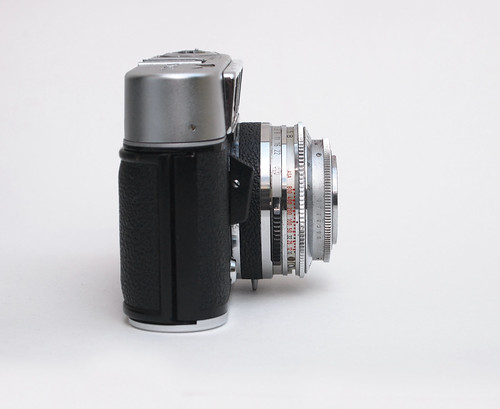 |
Voigtländer Vito CL Deluxe - side view showing ASA settings
|
When I got the chance to clean the camera, which had a kind of brown, greasy dust ingrained over it, I found that the lens had some fungus, apparently on all surfaces, including internally. As I wanted to use the camera while still in Stockholm without the tools to take the lens apart, I decided that I might as well not worry too much about the lens.The Voigtländer Vito CL's selenium meter has settings in ASA/DIN from 10-800/11-30 respectively. The ASA/DIN speed is set by pressing a tab next to the 1/500th shutter speed mark and rotating the ring to line up a red dot with the selected film speed. Two of the ASA numbers are picked out in black, 10 and 32, possibly for colour films available at the time. I occasionally read negative opinions about selenium cell meters, but in my experience - and the few cameras which have selenium meters that I've used - I've usually found them to work fine, although limited for low-light conditions. The side view image above also shows the small pointed prop underneath the lens/shutter assembly to ensure the camera stands level on a flat surface.
 |
Voigtländer Vito CL Deluxe - top plate showing light meter window
|
The Vito CL's meter is of the match needle variety. With the film speed set, rotating the aperture ring moves the red pointer to 'match' the white meter needle in order to obtain a correct exposure. The aperture ring is stepless, which means that any aperture between the standard settings can be used (changing the shutter speed setting also moves the red pointer, but in steps, unlike the aperture ring, and the raised finger-grips on the aperture ring suggest that this is changed
once the shutter speed is set; the manual describes this order of operation as "setting the exposure").
My camera has Voigtländer's cheaper Lanthar lens; Vito cameras were also supplied with the more expensive Color-Skopar lenses, and also the Color-Lanthar lens (although the Lanthar on my camera doesn't have the 'Color-' prefix, it is clearly coated, so this may have just been a marketing term for later versions of the Lanthar). The 50mm lens focuses to just below 1 metre (probably to 3 feet in US/UK versions), and is provided with symbols in red for convenient distance settings: a circle for views, a triangle for groups and a dot for portraits. The Pronto-LK six-speed shutter on my camera works at all speeds except 1/15th and 'B', both of which stick open: the film advance lever has to be used to close the shutter (the self-timer also sticks, something I've come to expect from old Gauthier leaf shutters). All settings are designed to be read off the lens from above, in common with the meter window, although the depth of field markings are a little oblique from this position. Later versions had a meter window inside the viewfinder for convenience; the viewfinder has framing marks with a dot for centring the composition and parallax marks for shooting at close distances.
 |
Voigtländer Vito CL Deluxe - detail of lens and shutter
|
On the bottom plate of the camera is a manually-set frame counter, which counts down, rather than up, and on the image below it is also just possible to see the cable release socket, hidden on the underneath of the shutter release button directly over the PC socket.
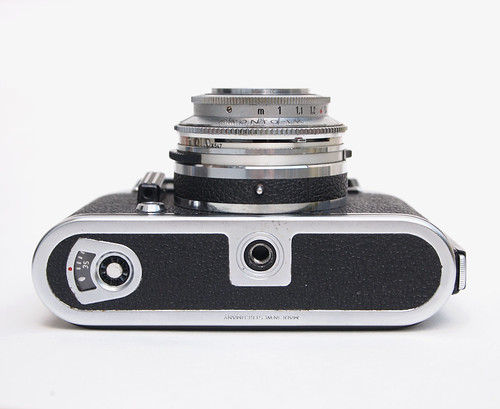 |
Voigtländer Vito CL Deluxe - showing frame counter
|
 |
Voigtländer Vito CL Deluxe - detail showing rewind knob with film type reminder
|
Like my Vito IIa that I've previously written about, the Vito CL has a single stroke film advance lever, but for rewinding it has an older-style knob which pops up when the switch below releases it. It contains an abstract film reminder disc - the manual suggests white for black and white film, blue for daylight colour film and yellow for tungsten film.
I shot a handful of films in Stockholm with the Vito CL - some APX 400,
Adox Silvermax, and some Fuji Superia that I had picked up in Copenhagen. The fungus in the lens did result in problems with flare, showing up quite clearly under certain conditions, most obviously with large bright areas of the scene in the frame adjacent to shadow areas, such as the first image below. However, the photographs suggest that this was not as bad a problem as I had anticipated, and shots with a narrower range of tones within the frame are much less affected, such as the very last sample image in this post. Possibly this does mean that the lens imparts a lower contrast to
all photographs taken with it, with the result that the lens looks as if it's from a much older camera.
 |
| Sample image on Adox Silvermax 100 showing flare |
 |
| Sample image on expired Fuji Superia 100 showing flare |
The colour photographs taken with the Vito CL also showed some odd shifts in hue and saturation but the film was seven years out of date, and very cheap, the main reason I'd bought it while passing through Copenhagen. The lens takes 32mm slip-on filters, and I used both a yellow filter for some of the black and white shots and a lens hood, sometimes both together; with the lens hood stacked onto the yellow filter, there was some noticeable vignetting in the corners. As the light meter is situated on the camera body, any filters requiring a filter-factor adjustment need to be calculated and set manually, either by changing the film speed, or, as I did when using the yellow filter, by matching the light meter needle, then changing the aperture by one stop.
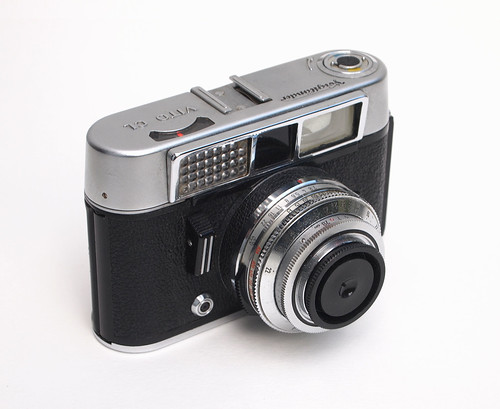 |
Voigtländer Vito CL Deluxe with improvised lens cap
|
Although the lens was not in an ideal condition, I still wanted to protect it, having bought the camera without a case, and I found that a plastic top from a film container fitted perfectly. I used one from a Silvermax film as the design - with recessed circle and toothed edge - seemed apt. Had I been intentionally looking to acquire a Vito C series camera for my collection, the CLR variant with a Color-Skopar lens would have been the model to choose, but finding a Vito CL for essentially 50 Swedish krona at a flea market was too tempting to pass on.
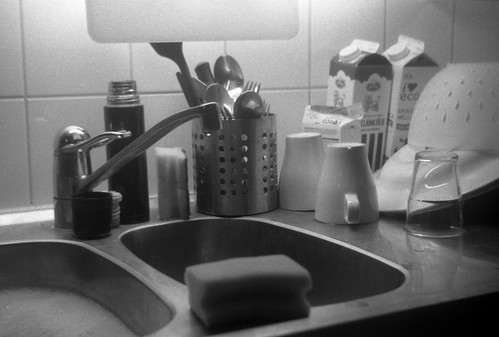 |
| Sample image on Agfaphoto APX 400 |
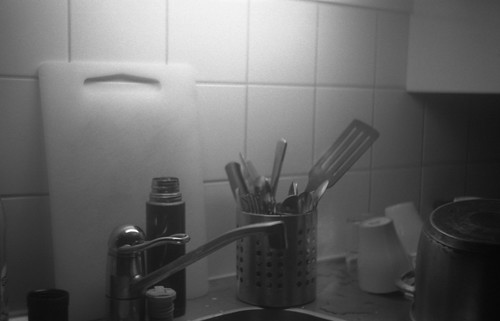 |
| Sample image with Adox Silvermax 100 |
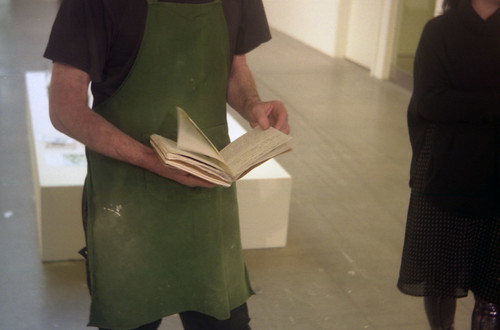 |
| Sample image on expired Fuji Superia 100 |
 |
| Sample image on expired Ilford Mark V |
Sources/further reading:
Vito C Series overview
Vito CL/CLR manual













just received a Vito CL from Ebay, and mine does almost the same (shutter stutter sticking on 1/15, and bulb)things lol. It also came with the Lanthar, and looks like you were able to get off some decent shots with yours. I will try mine out this weekend, and let you know. Thanks for the review :)
ReplyDeleteThanks for your comments. Did you get any good results from the camera?
DeleteI have the CLK with color Skopar 2.8. I have run only one roll of film , but was pleased with the results, particular the color saturation. The one thing on my camera that I have a little trouble with, is the ASA setting ring is very stiff to move.
ReplyDeleteI have just bought a Vito CL to day from a charity shop as I am staring to collect cameras,it is in perfect condition and it's in it's leather case with additional attachments and a flash,I'm wondering what it is worth?This is my second camera so far.
ReplyDeleteThe original case and the other accessories would certainly make it a more attractive package as a whole; it may be worth looking at what such a set may have achieved recently on popular online auction sites.
DeleteAlways avoided buying Russian lenses. But, after reading such good results , I decided to try this 28mm. What a pleasant suprise ! Such crisp results even at ful aperture.
ReplyDeleteWas just gifted a Vito CL, w skopar lens, and the Sutter does the same locks open at 1/15 and bulb, mabe a shutter cleaning will help, but maybe cost prohibitive...mine also came w a crazy focus view finder that fits on top ,c maybe better just shoe, very difficult to see through maybe better to approx focus distance...great heavy camera, challenge to use, but that what's make film so fun
ReplyDeleteThis comment has been removed by the author.
DeleteI've just had my Vito CLR CLA'd with a local camera service guy, it cost me £40 which I think is entirely reasonable. I never worry about the service costing more than the camera as the joy of these things is in the shooting. I absolutely love my Voigtlanders, they are fabulous.
DeleteGot one in near mint condition with the Skopar lens, original leather case and rangefinder on my desk for valuation right now, and I'm trying to resist buying it for myself because I really don't need any more vintage cameras...this article isn't helping me say no to it! :-D
ReplyDeleteI have one bought for a very
ReplyDeleteeconomical price. Looks in good condition generally. There's something loose and visible within the viewfinder; a white-coloured "square" ... seems to be floating loose. Also the meter-neeedle doesn't move.